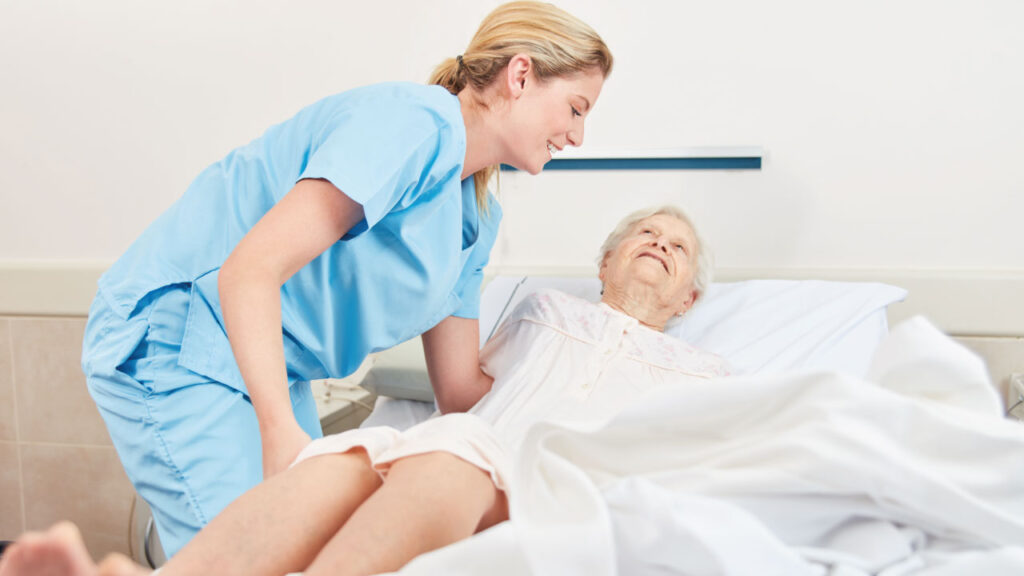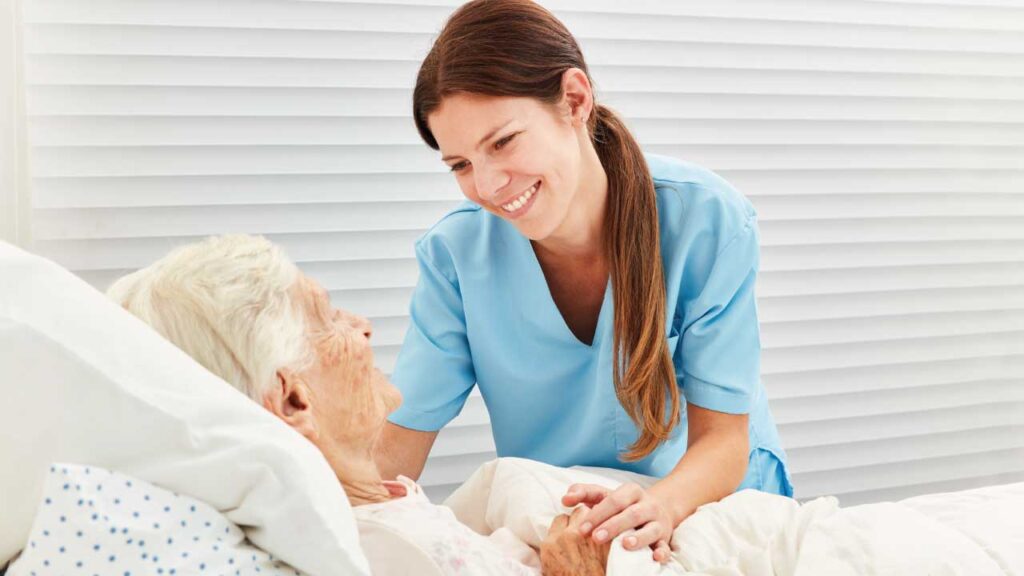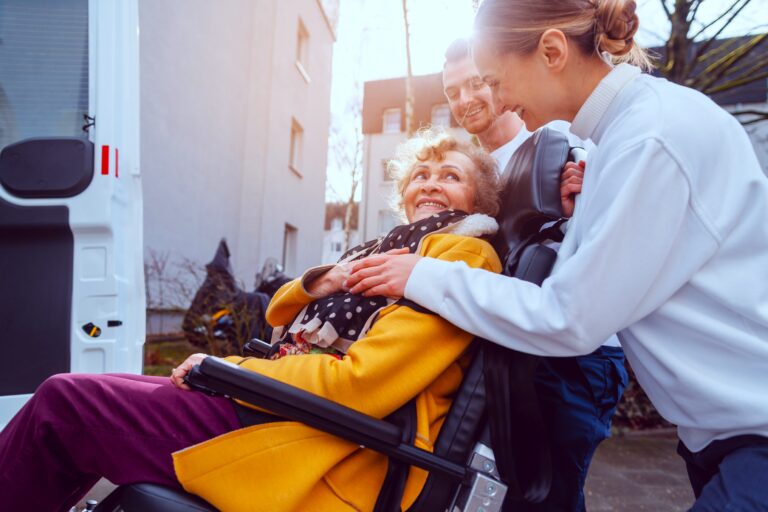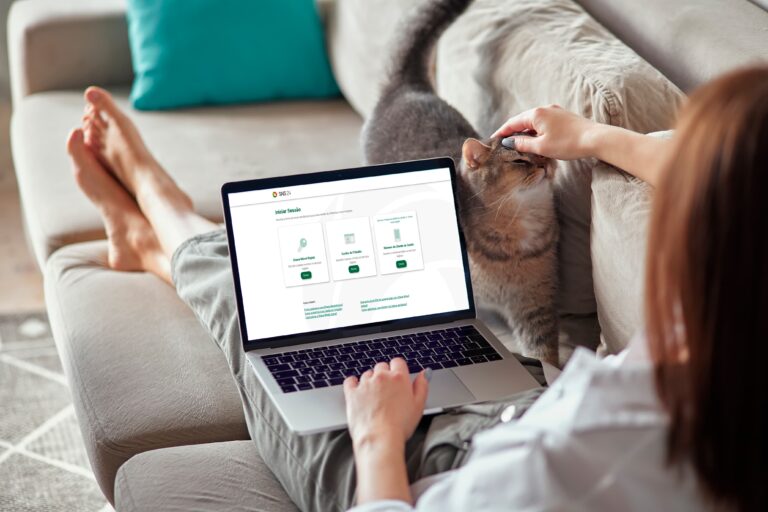Caring for someone who is bedridden is a profound gesture of love and dedication that requires patience, empathy and attention to detail. Whether for reasons of age, recovery from surgery or an accident, the process of helping the person out of bed can be one of the biggest challenges for the caregiver.
On the other hand, it’s also an opportunity to show care, respect and ensure that the person feels calm and comfortable. In this article, we’ll guide you through simple and safe steps, so that the process of lifting a bedridden person is as easy and comfortable as possible for both of you.
How to lift a bedridden person: step by step
Preparing the environment
Before you start, it’s important to prepare the space. Place a wheelchair or armchair next to the bed and make sure it is secure. If it’s a wheelchair, lock the wheels to prevent it from moving during the process. If it’s not a wheelchair, simply lean the armchair or chair against a solid piece of furniture or wall.
Position the person on the edge of the bed
With the person still lying down, start by gently pulling them to the edge of the bed. Take your time, as the aim is to move the person calmly and avoid any discomfort. Place an arm under their body, at about shoulder height, to help them slide in a controlled and unhurried manner.
Support your back and prepare to sit down
Support the person’s back with one arm and hold their armpit with the other, helping them to sit up in bed. Remember to bend your knees and keep your back straight to avoid injury. Lift the person gently, pushing with your legs, until they are sitting upright but comfortable.
Position your legs
Now that the person is sitting up, pull their knees off the bed, letting their legs dangle over the edge. This movement helps stabilize the person and prepares them to be safely transferred to the armchair or wheelchair.
Get the person out of bed
With the legs already positioned on the edge of the bed, gently move the person off the bed until their feet touch the floor. If necessary, adjust their position to ensure they remain balanced before proceeding.
Hug and lift with care
Wrap your arms around the person underneath, supporting them firmly. With your other hand, grab the back of their clothes, such as the hem of their pants. If the person is able, ask them to hold onto your neck, which helps to provide stability. Remember: keep your back straight and use your legs to lift the person gently and safely. This movement is essential to avoid overloading the spine.
Transfer to the chair
When the person is standing or almost standing, turn their body to direct them towards the wheelchair or armchair. Bend down and calmly position them on the seat. Adjust their position, making sure they are comfortable and secure, passing their arms over the back of the chair for greater stability.

Additional tips for lifting bedridden people
- Regular movement. If possible, move the person every two hours to avoid complications such as bedsores (pressure ulcers), and improve blood circulation. Even if the patient is unable to move on their own, it can help to turn the person onto their side or into a sitting position
- Use support equipment. The use of specialized equipment can greatly ease the physical strain on the caregiver. Beds that can be raised or adjusted make it easier to move around while providing additional comfort for both the caregiver and the patient
- Keep your posture correct. Posture is key to avoiding injuries. When lifting the bedridden person, bend your knees and use your legs for strength, not your spine. In this way, the movement is made more efficiently and without overloading the body.
- Communication with the patient. It’s important to communicate with the bedridden person throughout the process. Always ask how they feel and if they are comfortable while moving. It seems like a small gesture, but it helps build confidence and makes the process less stressful
- Keep the environment safe. Before you start, make sure the environment is safe and organized. Remove any objects that might get in the way, such as loose rugs or out-of-place furniture. An obstacle-free space makes all the difference in preventing falls and ensuring safety for both of you
How to clean bedridden people: tips
- Prepare the environment in advance. Gather all the necessary materials (towels, hygiene products, disposable gloves, clean clothes, sheets, etc.). Make sure the environment is warm and comfortable for the person
- Maintain privacy and respect. Cover the person with towels or sheets to ensure their privacy. Always ask how they are feeling and make sure the environment is welcoming and comfortable
- Gentle cleansing. Use gentle movements, starting with the cleanest areas (such as the face), then moving on to the arms, legs, torso and finally the intimate area. Dry the skin well to avoid irritation and pressure sores
- Beware of risk areas. Pay special attention to areas prone to bedsores, such as the back, hips and heels. When cleaning and bathing, use gentle movements and avoid rubbing these areas. If necessary, use soft towels or cloths and, when drying, do so gently, without pressing on sensitive areas.
- Use gentle and suitable products. Choose gentle hygiene products without strong fragrances that are easy to rinse off to prevent allergies and irritation. Specific products for sensitive skin are ideal
- Hand hygiene and materials. Wash your hands thoroughly before and after the process. Use disposable or easy-to-sanitize materials to avoid transmitting germs and keep everyone safe.
Do you need to transport a bedridden person? Count on Ambula!
If you need to transport a bedridden person to exams, appointments or other trips, Ambula is here to help. With adapted vehicles and trained professionals, Ambula ensures that the person is transported in a dignified manner, without rushing and with the utmost attention to their needs. Count on Ambula for safe and secure transportation, always with the patient’s well-being in mind.




